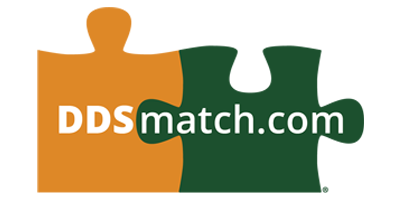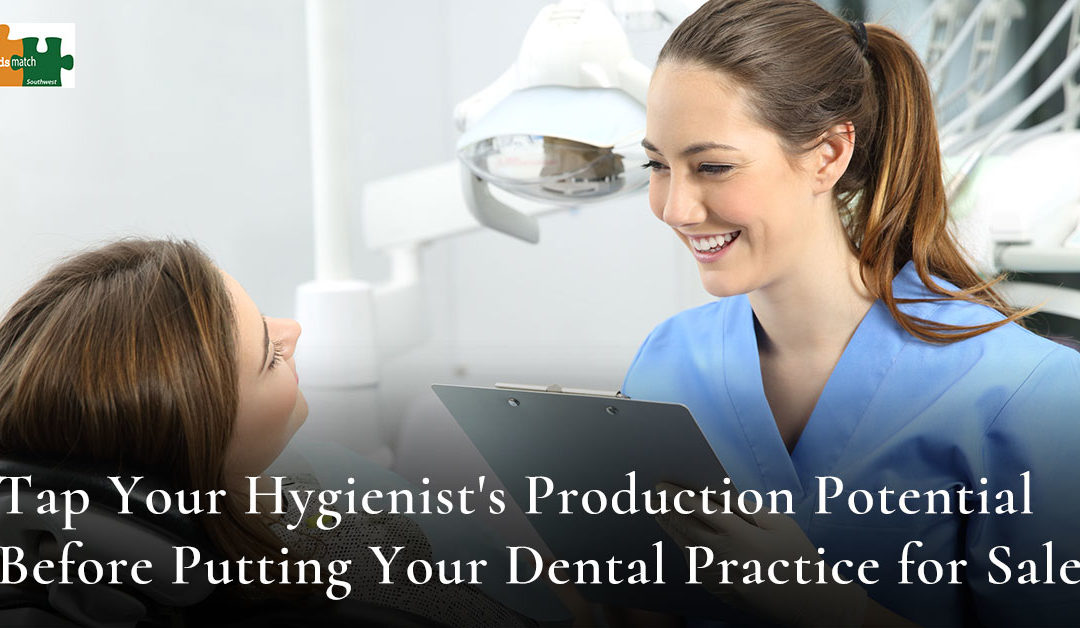We recently posted an piece suggesting you set production goals to help maximize your earnings per day and hour as a way to boost your income both as a way to increase your profitability and to build value before placing your dental practice for sale. Relatedly, you can make the same adjustments with your practice’s dental hygiene production.
In most practices, aside from what you produce, the only other major source of production are your dental hygienists. Some consultants recommend that you have a goal of having hygiene make up about 25% of your practice’s overall production. That’s a significant amount, but it is something that is achievable if it is well planned as part of overall scheme to create efficiency. Below are five suggestions for how to get more out of your dental hygienists.
1 – Patients Past Due for Hygiene Treatment
Who do you think will have a greater impact on patients overdue for hygiene treatment: your administrative staff members or your dental hygienist? We mean no disrespect to your staff members. They may be highly professional and capable people who excel in their capacity. However, they are not providers of clinical treatment. That is, they are not seen as having knowledge and expertise in hands-on dental care. The difference this makes to patients might surprise you.
You can leverage this in two ways. First, if your hygienist has time in their schedule (due to a gap or a no-show), they should have a list of patients ready to contact to encourage them to make an appointment. Second, they can also create a script for the administrative staff members to use, relaying a message from the hygienist about the overdue treatment, encouraging them to set an appointment. This script might focus on the importance of regular, ongoing hygiene treatment that will enable them to keep their teeth for their lifetime, one that educates about dental care and periodontal health in a positive and helpful way.
2 – Elective Procedures
As you know, your dental hygienists have more time with your patients than you or any other member on your team. Over the last several years, there is more of a focus in our society on whitening and, among adults, straightening of teeth. While these procedures may not be clinically necessary for ongoing oral health, many of your patients may find an appeal in these procedures. Many practices are underperforming when it comes to cosmetic procedures, implants, and adult orthodontics. You can leverage the time your dental hygienists have with your patients to offer and discuss these options.
Additionally, as you grow closer each day to the time when you will place your dental practice for sale, building this into your practice will be a selling point—having employees who are invested in and critical to increasing the practices overall productivity.
3 – Ongoing Treatment Reminders
You probably have a number of patients to whom treatment plans have been suggestion but that haven’t accepted your recommendations or haven’t completed the treatment. Too often, dental practices will provide a treatment plan recommendation and then simply leave it to the patient to decide. Consider, however, how many of those patients would be more likely to accept or complete the treatment plan with follow-up conversations?
Presenting a treatment plan is often not just a two-step process where you present the plan and the patient opts to accept it or not. There may be myriad factors as to why a patient chooses to accept or complete a treatment plan. The best way to boost your case acceptance rate is to have, in essence, an ongoing conversation about the treatment plan.
Your hygienists should make it regular practice for each appointment to review the patient’s file, see what treatment has been recommended but not completed, and to discuss that with the patient. Even if the patient’s reason is related to the annual renewal of dental benefits, it’s important to remind them of what is needed and why it is to their benefit. This way, you can leverage the time your hygienists spend with patients.
4 – Periodontal Diagnostics
Whether you know it or not, periodontal disease is a widespread problem, affecting about 65% of all patients, yours included. Most people don’t understand what it is, really, even though they may be experiencing its symptoms (such as red, swollen, or tender gums; bleeding when brushing; bad breath). This lack of awareness is an opening for your hygienists to be recommending care through a periodontal diagnostic program. If you create the program and train your hygienists on how to educate patients, you’ll be providing them with additional level of care and using your hygienist’s time to get closer to that 25% production goal. And, again, if you have a program like this being boosted by hygienists, that will only help you when you decide it’s time to place your dental practice for sale.
5 – Dental Hygienist Assistants
You have employees for a reason: you simply don’t have time to do everything and, because your time is valuable, you need to delegate the simpler tasks to someone with less training, skill, and experience. The same can be true for dental hygienists.
Not everything your hygienists are doing needs to be done by a hygienist, such as preparing rooms for treatment, developing x-rays, and performing other administrative duties. If you run your hygiene program like you run your work— having hygiene appointments in multiple chairs with an assistant doing prep work while the hygienist moves between chairs performing their work—you might be surprised at how much more productive it can be. If you have a high volume practice and available chairs, you might be able to increase your hygiene productivity by as much as 33%. Again, imagine how this will look to prospective buyers when you are ready to put your dental practice for sale
Selling a Dental Practice? We Can Help
DDSmatch Southwest are dental practice transition specialists committed to helping doctors meet their practice transition goals. If you are considering transitioning your practice in the next five years, we offer a free, no-obligation Practice Transition Assessment during which we will review with you the current, local dental practice transition market, best transition options for your practice, physical and image improvements to increase value, potential practice investments, and present and future staff integration. Contact us today and find out what we can do for you!

